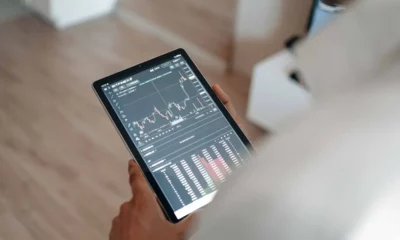Sponsored
Unity enhancement: Face tracking & background segmentation
Exploring challenges in achieving seamless face tracking and video backgrounds in Unity.
Just a heads up, if you buy something through our links, we may get a small share of the sale. It’s one of the ways we keep the lights on here. Click here for more.
Unity stands as a powerhouse in the world of game development and interactive experiences, captivating developers with its user-friendly interface, versatility, and adaptability.
As the go-to engine for creating games, AR/VR applications, simulations, and more across various platforms, Unity has become a cornerstone in the toolkit of developers.
However, when it comes to real-time background segmentation, challenges emerge.
In this exploration, we’ll delve into the complexities faced by developers in achieving seamless face tracking and video background Unity environment.
Unity background subtraction: A closer look

Before we unravel the challenges, it’s essential to appreciate how some notable entities have harnessed background subtraction within Unity:
- Banuba: Renowned for its SDK offering real-time background subtraction and face-tracking capabilities, Banuba’s technology has found a home in popular mobile apps like FaceApp, Snapchat, and
TikTok . - Volkswagen: Leveraging Unity, Volkswagen crafted a virtual reality showroom, employing real-time background subtraction and object tracking to immerse customers in a digital exploration of their cars.
- Magic Leap: The creators of a mixed-reality headset, Magic Leap utilizes Unity for its development, integrating real-time background subtraction and object recognition to merge virtual objects with the real world seamlessly.
These examples underscore the widespread applicability of background subtraction in Unity across industries, showcasing its role in creating immersive experiences that seamlessly blend virtual and real-world elements.
Challenges in real-time background segmentation in Unity
Despite Unity’s popularity and versatility, developers encounter specific challenges when implementing real-time face tracking and background segmentation. Here are the common hurdles:
- Lighting conditions: Changes in lighting conditions pose a significant challenge to face tracking, as varying light levels can distort facial features, making accurate tracking a complex task.
- Occlusions: Objects or body parts obstructing the view of the face create issues in face tracking. Occlusions can lead to tracking errors, impacting the overall accuracy of the system.
- Diverse faces: Face tracking systems must effectively handle different faces, irrespective of gender, age, ethnicity, or facial hair. Achieving this requires extensive training data and sophisticated algorithms.
- Background noise: Dynamic backgrounds with moving objects or fluctuations in lighting contribute to background noise, leading to errors in segmenting the foreground and background.
- Real-time processing: Processing video streams in real-time while maintaining accuracy and avoiding lag adds complexity to face tracking and background segmentation.
- System requirements: The computational demands of face tracking and background segmentation can strain lower-end devices, limiting the system’s effectiveness in real-time applications.
- Dynamic environments: Handling dynamic environments where the camera or scene objects are in motion poses challenges for real-time applications that require rapid adaptation to scene changes.
Solutions to overcome challenges

While the challenges are formidable, various solutions help developers navigate the complexities:
- Advanced computer vision techniques: Face-tracking SDKs, such as Banuba, utilize advanced computer vision techniques like adaptive thresholding and color-based segmentation to handle changes in lighting conditions.
- Multiple cameras or depth sensors: Overcoming occlusions can involve using multiple cameras or depth sensors to capture a complete scene view, enhancing face-tracking accuracy.
- Deep learning models: Training deep learning models on diverse datasets ensures accurate tracking of different faces, overcoming challenges related to gender, age, ethnicity, and facial hair.
- Noise reduction techniques: Implementing temporal filtering or morphological operations helps smooth foreground/background segmentation over time, mitigating the impact of background noise.
- Hardware acceleration: Utilizing GPU acceleration, as seen in Banuba’s face-tracking SDK, ensures real-time performance on mobile devices by offloading processing tasks to hardware.
- Optimization and lower-resolution inputs: Developers can optimize algorithms, use lower-resolution inputs, and leverage cloud-based processing to address computational power limitations.
- Object-tracking algorithms: To handle dynamic environments, some SDKs deploy object-tracking algorithms that track camera movement or other objects in the scene.
Final thoughts
In conclusion, developers can overcome the challenges of real-time face tracking and background segmentation in Unity by embracing advanced computer vision techniques, deep learning models, hardware acceleration, and optimization strategies.
By doing so, they pave the way for immersive and seamless experiences that push the boundaries of what Unity can achieve in the realm of real-time interactions.
Have any thoughts on this? Drop us a line below in the comments, or carry the discussion to our Twitter or Facebook.
Editors’ Recommendations:
Disclosure: This is a sponsored post. However, our opinions, reviews, and other editorial content are not influenced by the sponsorship and remain objective.



































